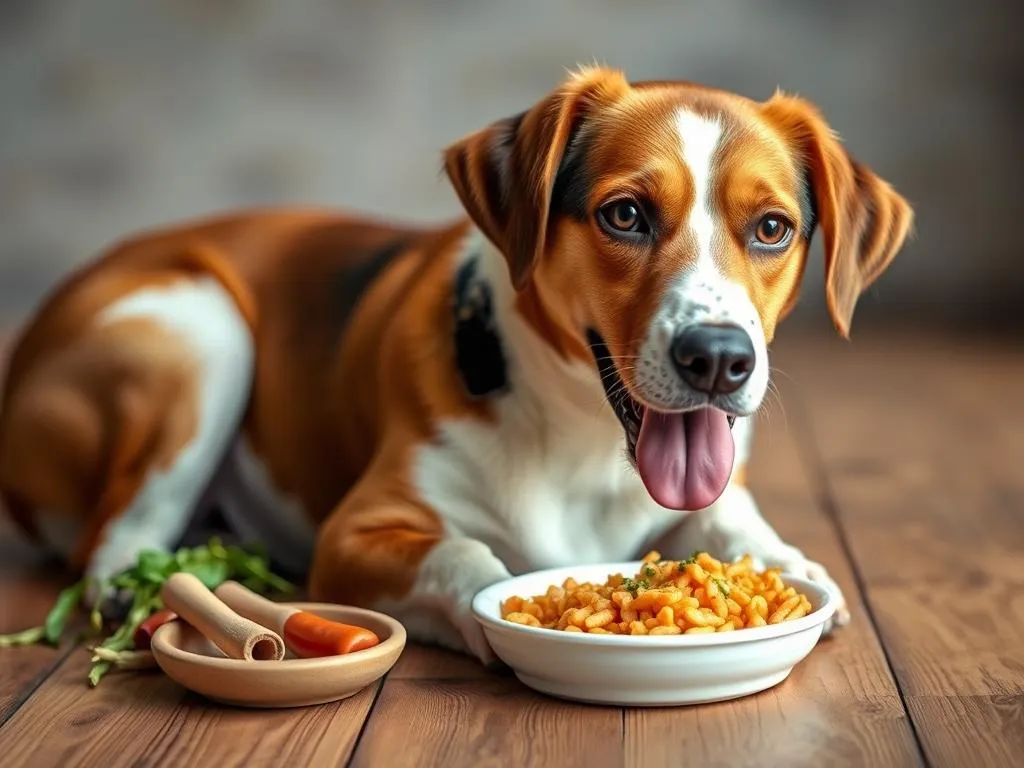
Introduction
Pancreatitis in dogs is a serious condition that occurs when the pancreas becomes inflamed. This inflammation can be triggered by various factors, including dietary indiscretion, obesity, certain medications, and underlying medical conditions. Understanding the role of diet is crucial in managing this condition, as improper nutrition can exacerbate symptoms or lead to flare-ups.
When it comes to managing pancreatitis, choosing the best foods for dogs with pancreatitis is essential. The right diet can significantly impact a dog’s recovery and overall health. This article will provide insights into suitable food options, the importance of nutrition, and how to care for a dog diagnosed with pancreatitis.
Understanding Pancreatitis in Dogs
Types of Pancreatitis
Pancreatitis in dogs can be classified into two main types: acute and chronic.
- Acute pancreatitis occurs suddenly and can be life-threatening. Symptoms may include severe abdominal pain, vomiting, diarrhea, and lethargy.
- Chronic pancreatitis is characterized by ongoing inflammation that can lead to long-term damage to the pancreas. Dogs may experience intermittent symptoms, making it more challenging to diagnose.
Symptoms of Pancreatitis
Recognizing the symptoms of pancreatitis is critical for timely intervention. Common signs include:
- Vomiting
- Abdominal pain (often manifested as reluctance to move or touch)
- Lethargy
- Diarrhea
- Loss of appetite
Diagnosis
Veterinarians typically diagnose pancreatitis through a combination of clinical signs, blood tests, and imaging studies. Blood tests can reveal elevated levels of pancreatic enzymes, while ultrasound may show an inflamed pancreas.
Risk Factors
Several factors can increase a dog’s risk of developing pancreatitis, including:
- Age: Older dogs are more susceptible.
- Breed: Certain breeds, such as Miniature Schnauzers, Yorkshire Terriers, and Dachshunds, are at a higher risk.
- Diet: High-fat diets or sudden dietary changes can trigger pancreatitis.
The Role of Diet in Managing Pancreatitis
Importance of a Low-Fat Diet
One of the most crucial dietary adjustments for dogs with pancreatitis is transitioning to a low-fat diet. High-fat foods can stimulate the pancreas, leading to inflammation and worsening the condition. A diet consisting of low-fat proteins and carbohydrates helps minimize stress on the pancreas.
Nutritional Needs of Dogs with Pancreatitis
Dogs with pancreatitis still require a balanced diet to meet their nutritional needs. Key nutrients include:
- Protein: Lean sources, such as chicken, turkey, or fish, can provide essential amino acids without excessive fat.
- Carbohydrates: Easily digestible carbohydrates, like rice or sweet potatoes, are vital for energy.
- Vitamins and minerals: Essential for overall health, include them through proper food choices or supplements.
Hydration Needs
Hydration is crucial for all dogs, but particularly for those with pancreatitis. Ensure your dog has constant access to fresh water. Dehydration can lead to further complications, making it essential to monitor water intake closely.
Best Foods for Dogs with Pancreatitis
Veterinary Prescription Diets
Veterinary prescription diets are specifically formulated for dogs with pancreatitis. These diets are low in fat and high in digestible carbohydrates. Some popular brands include:
- Hill’s Prescription Diet: Known for its low-fat options that promote digestive health.
- Royal Canin Veterinary Diet: Offers specialized formulas for managing pancreatitis.
While these diets can be beneficial, it’s essential to consult with your veterinarian before making any dietary changes.
Homemade Diets
For pet owners who prefer homemade meals, it’s crucial to select safe ingredients. A well-balanced homemade diet for dogs with pancreatitis may include:
- Lean proteins: Skinless chicken, turkey, or fish.
- Carbohydrates: Cooked rice, oatmeal, or sweet potatoes.
- Vegetables: Carrots, green beans, or squash (cooked and mashed).
Sample Recipe for Dogs with Pancreatitis
- Ingredients:
- 1 cup of cooked chicken (skinless and boneless)
- 1/2 cup of cooked rice
- 1/2 cup of steamed carrots
- Instructions:
- Cook the chicken thoroughly and chop it into small pieces.
- Cook the rice according to package instructions.
- Steam the carrots until soft and mash them.
- Combine all ingredients and serve in moderation.
Commercial Dog Foods
When selecting commercial dog foods, look for brands that offer low-fat options. Some reputable brands include:
- Blue Buffalo: Offers a low-fat formula that is easy on the digestive system.
- Wellness: Provides a range of recipes tailored for sensitive stomachs, including low-fat options.
How to Read Labels
When choosing commercial dog foods, always check the label for fat content, ensuring it meets the low-fat criteria. Look for foods that list high-quality proteins and avoid those with fillers or artificial additives.
Supplemental Foods
Incorporating certain fruits and vegetables can be beneficial for dogs with pancreatitis. These include:
- Safe fruits: Apples (without seeds), blueberries, and bananas.
- Vegetables: Sweet potatoes, peas, and pumpkin.
Additionally, probiotics and digestive enzymes can aid digestion and promote gut health. Consult with your veterinarian about suitable supplements for your dog.
Foods to Avoid
High-Fat Foods
Avoiding high-fat foods is critical for managing pancreatitis. Common high-fat foods to steer clear of include:
- Fatty cuts of meat (e.g., bacon, sausage)
- Dairy products (cream, cheese)
- Fried foods
- Rich table scraps
Human Foods That Are Harmful
Several human foods can be particularly harmful to dogs with pancreatitis:
- Chocolate: Toxic to dogs and can worsen pancreatitis.
- Garlic and onions: These can lead to digestive issues and toxicity.
- Grapes and raisins: Known to cause kidney damage in dogs.
Signs of Inappropriate Foods
Be vigilant for signs of adverse reactions when introducing new foods. Symptoms may include:
- Vomiting
- Diarrhea
- Increased abdominal pain
- Lethargy
If any of these signs occur, consult your veterinarian immediately.
Transitioning to a New Diet
How to Transition Gradually
When switching your dog to a new diet, it’s important to transition gradually. Here’s a step-by-step approach:
- Start with a small amount of the new food mixed with the old food.
- Gradually increase the amount of new food while decreasing the old food over 5-7 days.
- Monitor your dog’s response during this transition period.
Monitoring Your Dog’s Reaction
Keep a close eye on your dog’s symptoms during the dietary transition. Note any changes in appetite, energy levels, or gastrointestinal issues. Maintaining a journal can be helpful in tracking these changes.
When to Consult a Veterinarian
If you notice any concerning symptoms during the transition or if your dog seems unwell, consult your veterinarian. They can provide guidance tailored to your dog’s specific needs.
Frequently Asked Questions (FAQs)
Can dogs with pancreatitis eat chicken?
Yes, lean chicken is typically safe for dogs with pancreatitis, as long as it’s skinless and cooked without added fats or seasonings.
What are the signs of pancreatitis flare-ups?
Signs of a flare-up may include vomiting, severe abdominal pain, lethargy, and loss of appetite. If these occur, seek veterinary assistance.
How long does it take to see improvement with a new diet?
Improvements can vary, but many dog owners notice a decrease in symptoms within a few days to weeks after starting a low-fat diet.
Is it safe to give treats to dogs with pancreatitis?
Treats should be low in fat and offered sparingly. Always opt for healthy, dog-friendly options and consult your vet for recommendations.
Conclusion
Proper nutrition plays a vital role in managing pancreatitis in dogs. By choosing the best foods for dogs with pancreatitis, pet owners can help their furry friends lead healthier, more comfortable lives. It’s essential to consult with a veterinarian for personalized dietary recommendations tailored to each dog’s unique needs. With the right approach, dogs with pancreatitis can still enjoy a fulfilling diet while minimizing the risk of flare-ups.









